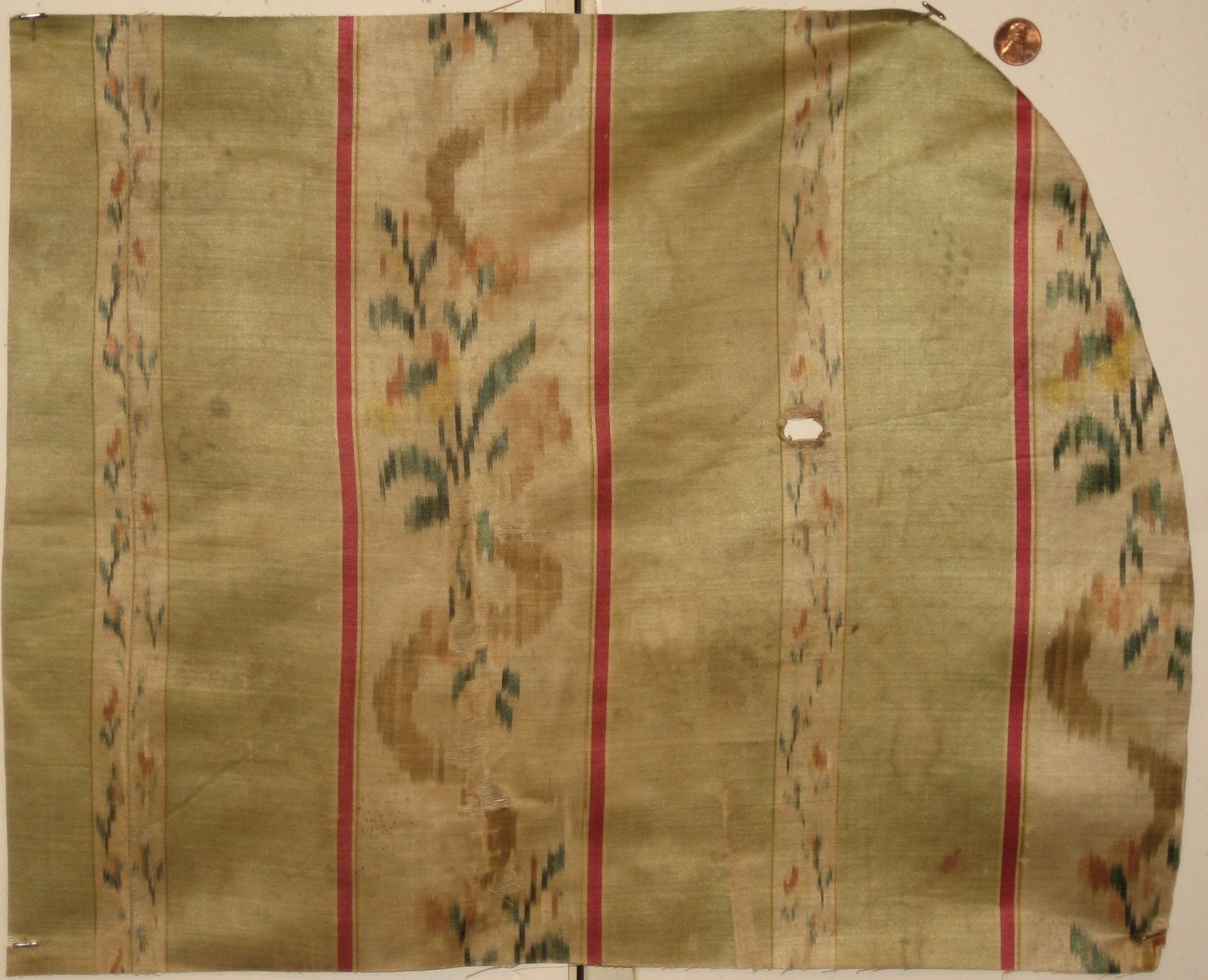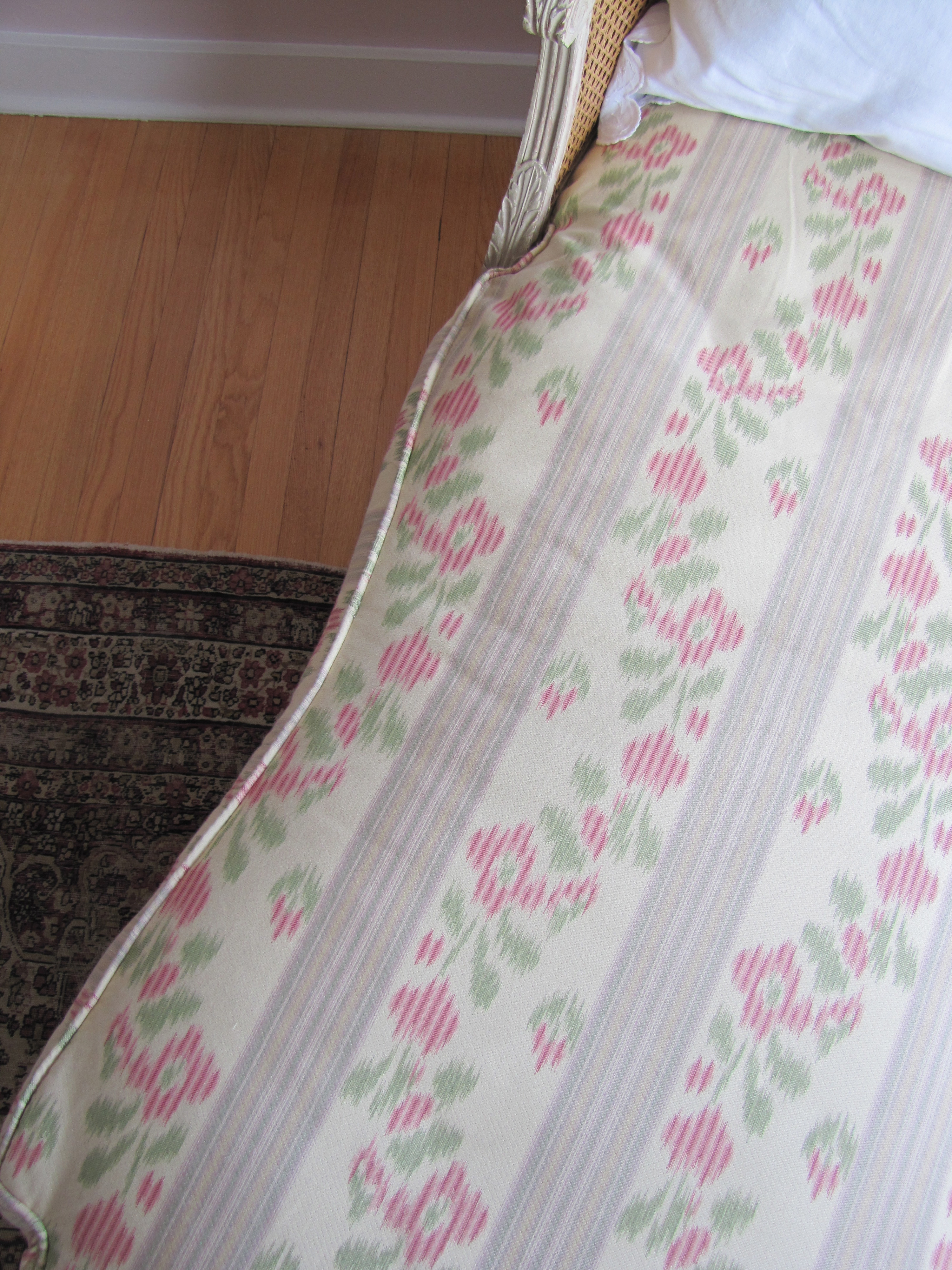I’m back to writing about one of my favorite kinds of textiles – ikat. While many continue to associate the term with the very popular Central Asian style of the textile – think Madeline Weinrib pillows – this weaving technique was and is a global phenomena. Obviously I adore the Japanese version known as kasuri and you can read more about that here and here. But if you are tired or bored with ikat, I’ve got a version that I think has been underused, perhaps even unrecognized a bit. In modern parlance, I call them French floral ikats, for their soft western realistic flowers, but as I continue in the post, you’ll see there is a historical reason too. I’ve been thinking about them a lot lately as I have fallen in love with Parlor Textile‘s new fabrics this season, in particular their French Ikat in Classic Blue. I think it would make a gorgeous headboard for my 14-year-old daughter’s bedroom makeover. I’m looking for something that has both a mod prettiness and timeless lasting power. Can’t you just see it?
Reproduced from an 18th century piece of fabric courtesy of the Museum of Fine Arts in Boston, their French Ikat also comes in a pretty salmon pink colorway.
Kathryn Ireland has long had a loose floral Ikat which comes in a number of colors including this green and pink. You’ll notice both patterns have some banding – ribbons I like to call them – giving the flowers a bit of a striped backing to rest themselves on.
So why am I referring to these as French ikats? Well, ikat fabrics are not just all-the-rage today. Cue up mid-18th century France to discover an earlier ikat craze. Inspired by silk road imports, chiné à la branche was the French answer to the technique. Manufactured mainly in Lyons, these silks were woven in just the way you might expect. Warp threads were dyed in small bunches (thus the term “branche”) before the weaving, yielding the blurred pattern. They were extremely time-consuming to make and thus expensive so no surprise that they have historically been associated with Louis XV and Louis XVI, and more notably by Marie-Antoinette for the fabrication of her court clothes and for the upholstery of luxury furniture. And why the “chiné”? Just like “blanc de Chine” it connotes the idea that the style came from the east – although not really from China in this case – just that general direction.
Like all French fashions in the 18th century, it traveled to England as well, where it was often referred to as “Pompadour silk” for obvious reasons. Even to the modern viewer, all of these dresses just scream impressive and expensive, which they were.
You can see the stripes and the blurry flowers in this detail of the dress on the right above.
Harder to find are examples of antique chiné à la branche used for upholstery as I imagine it took a much harder beating than the fancy dress. In this small worn example we see the definitive stripes and banding that give the fabric the extra visual structure that you don’t always find in traditional ikat.
After industrialisation, chiné à la branche, which was both slow and costly, finally disappeared, leaving in its wake the modern version in which the pattern is printed onto the warp in lieu of hand dying. Last year I used Lee Jofa‘s Lambelet Stripe in Rose Amethyst to upholster the cushion on my antique French caned and painted chaise at the beach house.
I searched for a long time as the piece called for a special fabric in that it needed both a nod to the past and one to the present. Again it was the combination of the stripes with the ikat flowers that made it perfect – modern and traditional at the same time. In retrospect, I think Parlor Textile’s new French Ikat in the pink would have been a lovely choice for this piece too had it been available.
Charles Faudree has a fabric line for Vervain that includes this Ruby Ikat in a few colors, including this purple and green. It’s a more casual take on a very formal style…
…although shown here in Veranda in a more typical way on a Rococo bench. But I do think these fabrics are ripe for reinvention and mixing in today’s interiors.
One final example has my eye humming – this wild watercolor floral called Malvasia from Rubelli. The pattern is taken from a vintage sketch in the Rubelli archives. Not really the same thing at all but I do think you could have a lot of fun with this. And I can imagine the 18th century ladies thinking it would make a fabulous dress!
Image credits: 1-2. Parlor Textiles, 3-4. Kathryn Ireland, 5. Victoria & Albert Museum, 6-7. The Metropolitan Museum of Art, 8. eBay, 9. Lee Jofa, 10. me, 11. Vervain, 12. Veranda, 13. Rubelli.














Wonderful post. Thank you so much.
Simply superb! And so well researched! My compliment!
karin
Thank you!